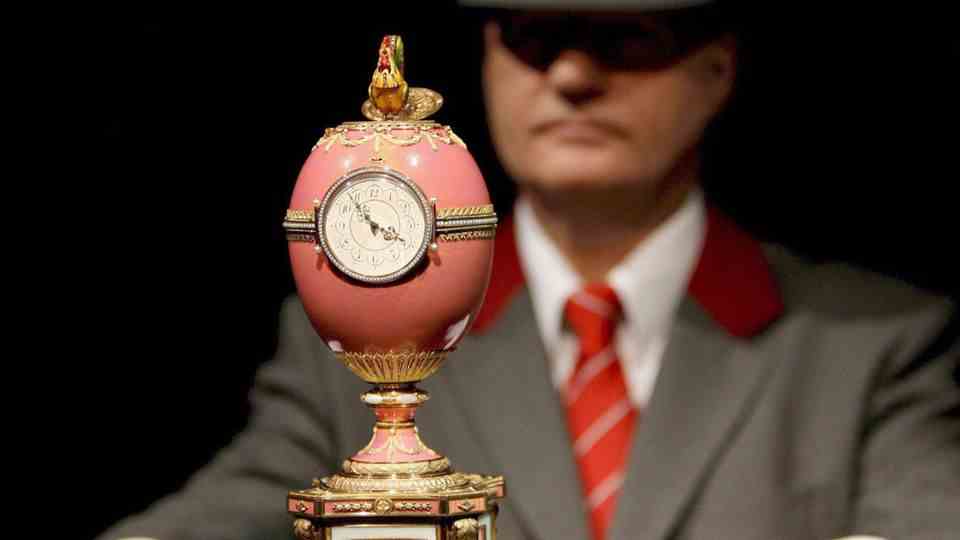Russian art
Oligarchs without eggs: Nobody buys Fabergé anymore – what the sanctions are doing to the art market
Fabergé eggs are popular items at auction for Russian oligarchs
© epa Chrysa Panousiadou / dpa / Picture Alliance
In London there are special auctions for Russian art. The summer ones have now been cancelled. Because without oligarchs there are no buyers. How the sanctions against Russia affect the art market.
Oligarchs sanctioned by the West are feeling the effects of the restrictions. Anyone who has previously led a life with a private plane, superyacht and various luxury properties obviously feels that their options have been severely curtailed. Billionaire Mikhail Fridman complains about “house arrest” in his London 70 million mansion. The oligarch lives in the English capital and ended up on the sanctions list (the star reported).
Anyone on this list will no longer be sold art on the Thames. Buying expensive works at auction is a popular hobby of the oligarchs. With her rise in the 1990s, her interest in the art market also grew. Works by Russian artists, such as painters of winter fairy tales or romantics, are particularly popular with Russian billionaires, as are objects by the goldsmith and jeweler Peter Carl Fabergé from St. Petersburg.
Oligarchs have a soft spot for Fabergé eggs
The filigree, lovingly detailed eggs made of gold, diamonds and enamel were created in Fabergé’s workshop between 1885 and 1917 and are sold today for proud prices. The most expensive, the Rothschild Fabergé egg, was auctioned at Christie’s in 2007 for the equivalent of around 10.6 million euros.

The Rothschild Fabergé egg was auctioned at Christie’s in 2007 for the equivalent of around 10.6 million euros. This makes it the most expensive egg of its kind.
© epa Rain / dpa / Picture Alliance
But this is the end of auctions of this kind. The London auction houses have canceled events for Russian art in the summer. They recognized the potential of the oligarch clientele early on and responded to the demand with so-called Russian sales. Works that oligarchs like are offered here at regular intervals. The auction house Sotheby’s writes on its website of “breathtaking 17.7 million pounds”, the equivalent of around 21 million euros, at the corresponding auction in November. A record.
The one in summer is now cancelled, as is the case with other auction houses in London. Where there are no buyers, there is no need for an auction. The Sotheby’s website now says in broad terms: “The Russian art auctions will not be held in London this June. Our hearts and thoughts go out to all those affected by the Ukraine crisis.”
This market is comparatively small
Sanctions on the art market are not new. There have been a few since the annexation of Crimea. The new addition is unlikely to hit the art market as a whole hard. As the “NZZ” writes, sales of Russian art are negligible for the art trade. In 2021, it was less than £40 million at Christie’s and Sotheby’s, which corresponds to a good one percent of the two auction giants’ total annual volume. At the prestigious auctions for classical modern and contemporary art, the Russian clientele would not carry much weight. Collectors from the USA, the Middle East, China and other Asian countries set the tone here.
Art expert Carsten Probst pointed out on “Deutschlandfunk Kultur” an area that should definitely notice the sanctions: museum operations. The reason: loans and research programs are now suspended.
Swell: NZZ, faberge.com, deutschlandfunkkultur.de, sothebys.com, christies.com

